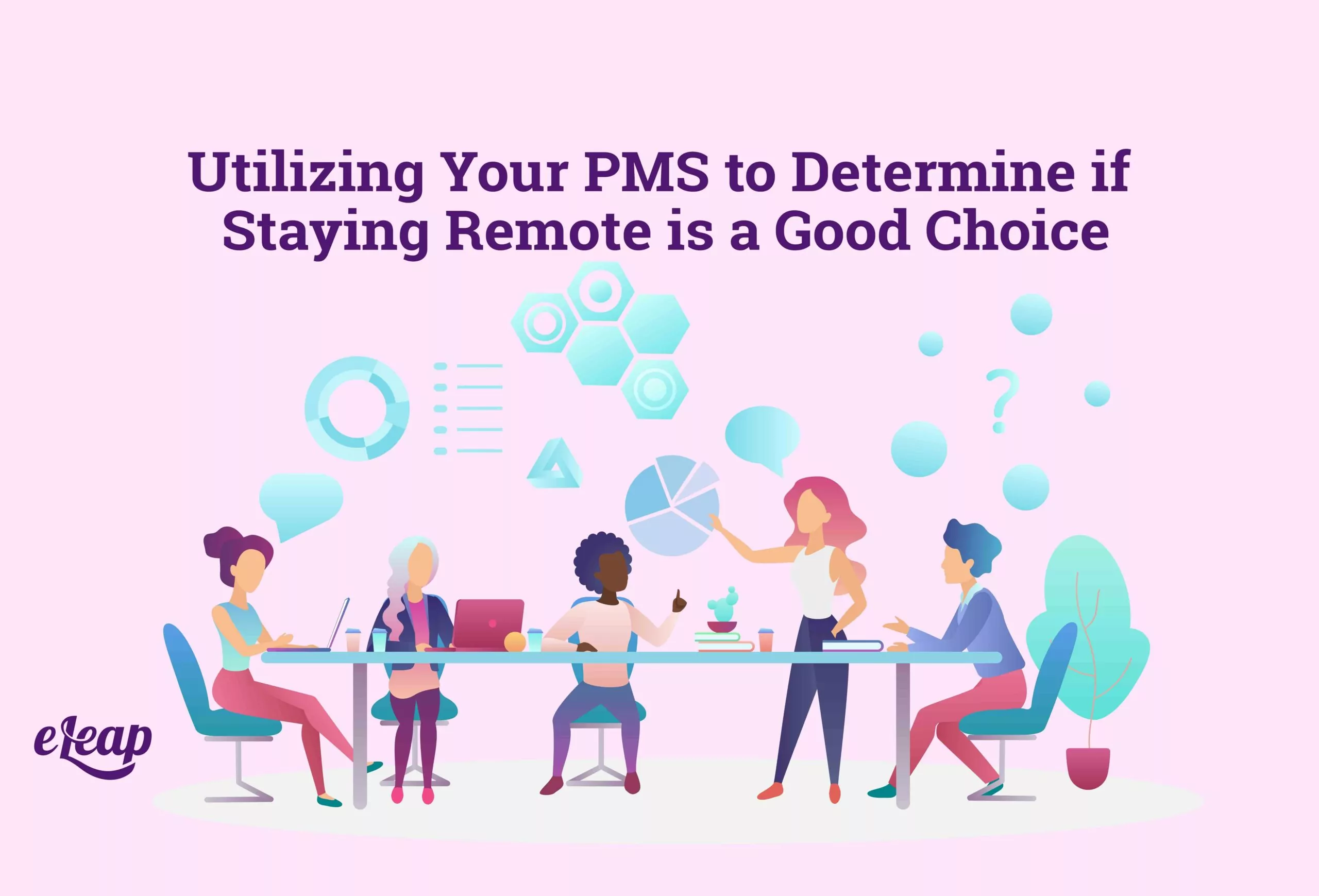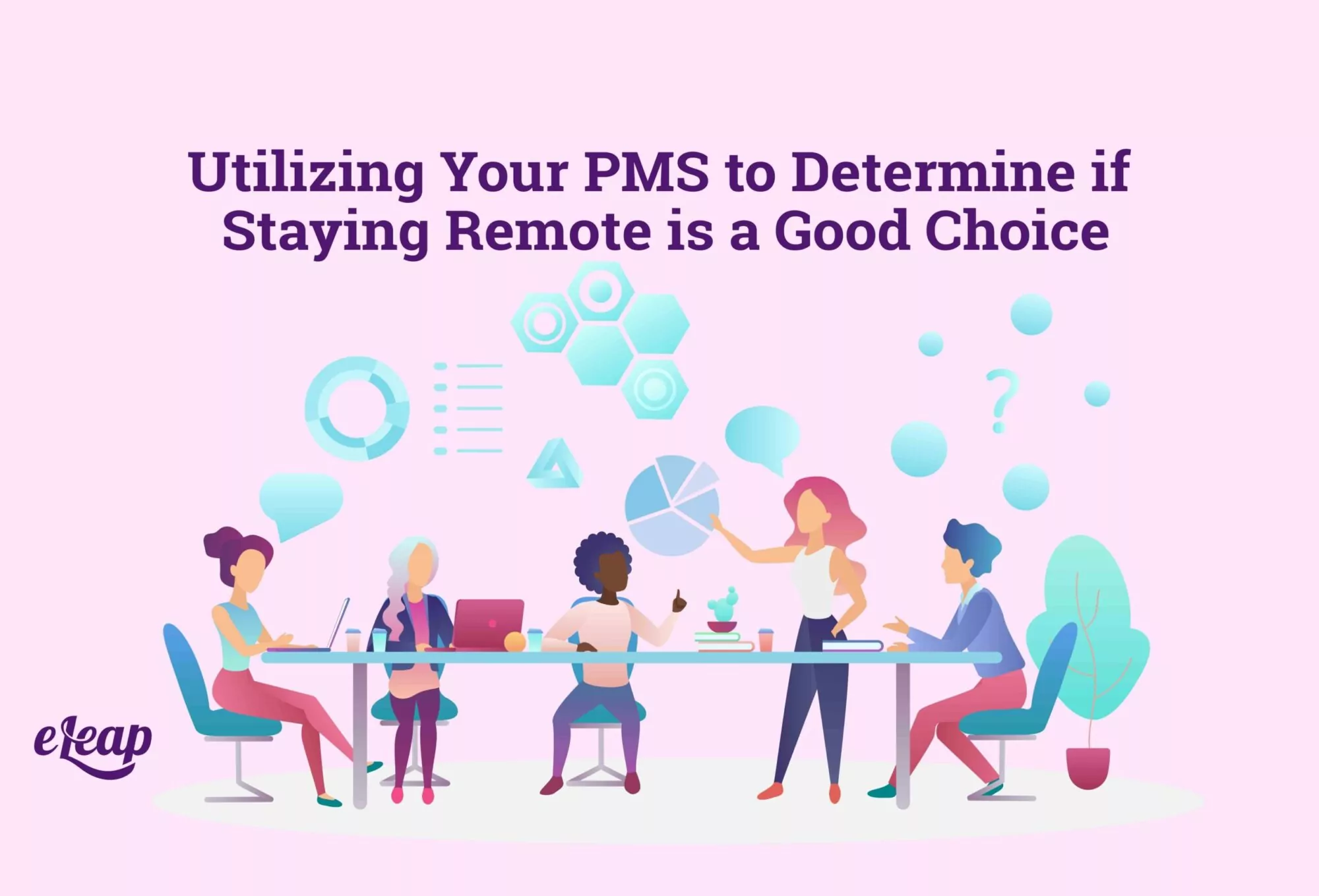Utilizing Your PMS to Determine if Staying Remote is a Good Choice

Now that the worst of the pandemic seems to be behind us and more people are vaccinated against COVID-19, several companies are considering going back to the office. Whether it’s for the comradery, the connection, or even just the comfort of “getting back to normal,” there’s a great debate that’s going on as to whether this is even necessary. If you’re on the fence about what to do with your team, the good news is that you’ve got all the resources that you need to make the best decision.
Your performance management system and results can tell you all about how your employees are doing and whether staying remote is the way to go. Companies are looking inward to redefine the “office” after the past few years, and although many want to get back to it, that won’t be the same office that it once was. For your organization, that means taking the time to look at the pros and cons of staying remote on a full-time basis, creating a hybrid office schedule, or allowing employees to choose the solution that best fits their needs.
After all, if your performance management system can tell you that an employee is over-performing and actually thriving in their position now that they’re working from home, you’ll likely want to leave them be. However, if you see that certain people are struggling or some skills are being lost in the transition, you might reconsider going back to the office.

Keep Your People Involved
Mind you, this isn’t a solo decision that you should just make once you’ve read the reports and seen how people are doing. It’s a discussion and a collaborative effort between management and employees to decide what is best for them, based on their specific needs, the way they work, and what kind of work they actually do. You might think that Mr. Over-performer loves working from home based on the analytics, but the reality could be that he’s just anxiously getting work done so that he can go about his regular life because he hates feeling isolated at his desk.
Ask and your people will answer. Make the survey or query a part of your PMS and training modules, and help people figure out what works best for them if they’re not able to readily tell you what they like better. It’s a balancing act, but with the modern resources that come from your PMS, you should have no trouble having the conversation about where to go from here in terms of remote versus in-office operations.
Use Daily Check-Ins to Track Progress
The reason that many people struggle with remote work is the lack of physical interaction and accountability. Sure, people know what they have to get done in a day, and it’s assumed they’ll get it done. But when no one is checking in or asking if you’re on track, it is easy to get lost, discouraged, and struggle with getting things done. Make sure that your team gets a daily one-on-one with management, even if it only lasts a few minutes. Create an open line of communication so that people know they can come to you at any time, with any issue they may have.
These check-ins can be a great way to see how people are progressing as time goes on and they remain remote. Some people will crave the physical office and be ready to go back to work as soon as you say “go.” Others are learning to love this unique new way of working that allows them to incorporate their lives more easily and create a stronger work-life balance. In any case, the check-ins will help you see just which is which and make the decision about how to move forward with your operations.
Use Real-Time Analytics to Project Future Results
Studies have shown that in 2020 and the early days of the pandemic, as many as 71% of employers were struggling to adapt to telework or remote working arrangements. By 2022, however, that has changed drastically. Not only have employers and employees figured it out, but they’re learning to love it. Of course, you can make sure that’s the case by measuring employee metrics and analytics.
See how people are performing at home or in a remote setting. Consider the tasks put upon them in a day or a week and how they are balancing their workload. Are they happier, more productive, and more motivated? If they are, it could be a good idea to let them stay remote. On the other hand, if you see analytics that show performance drops, a lack of participation, or a decline in productivity, that could be a sign that someone is better suited for the office environment.
The analytics aren’t going to spell it out for you, but you can make inferences like the ones above to ensure that your people are working in the way that’s best for them because that’s ultimately what’s best for your organization. Utilize your metrics to predict and project what the future will look like in both a remote and office environment. Then, make the decision that makes the most sense.
Create a Modified Performance Management System for Your New Team
Of course, once you decide how to set your team up moving forward, you’ll have to make changes to the performance management system so that you can deliver the best solutions for the new way of doing business. How you managed performance previously might be different than your metrics now, thanks to a new hybrid schedule where people only have to come to the office one or two days a week. You might have different metrics on those days than on their remote days, for example, or you might just need to consider different performance metrics based on the location change.
Once you decide on your future work arrangements, you’ll be able to update tools in your PMS to ensure that you’re monitoring performance in the best way for each individual and that you’re making the most of your analytics to work the way that’s best for your organization as a whole. The eLeaP continuous performance management system provides organizations with powerful options to attract and retain high caliber team members.